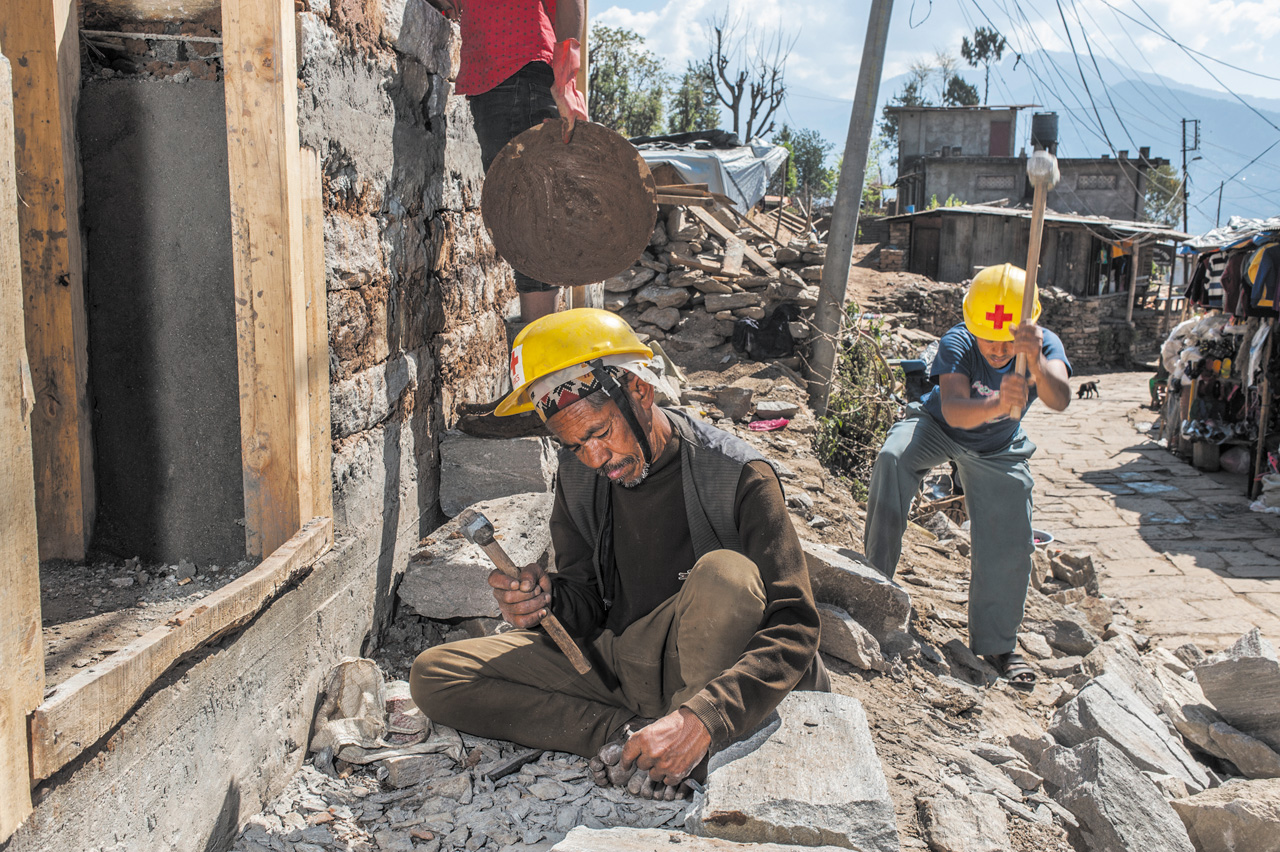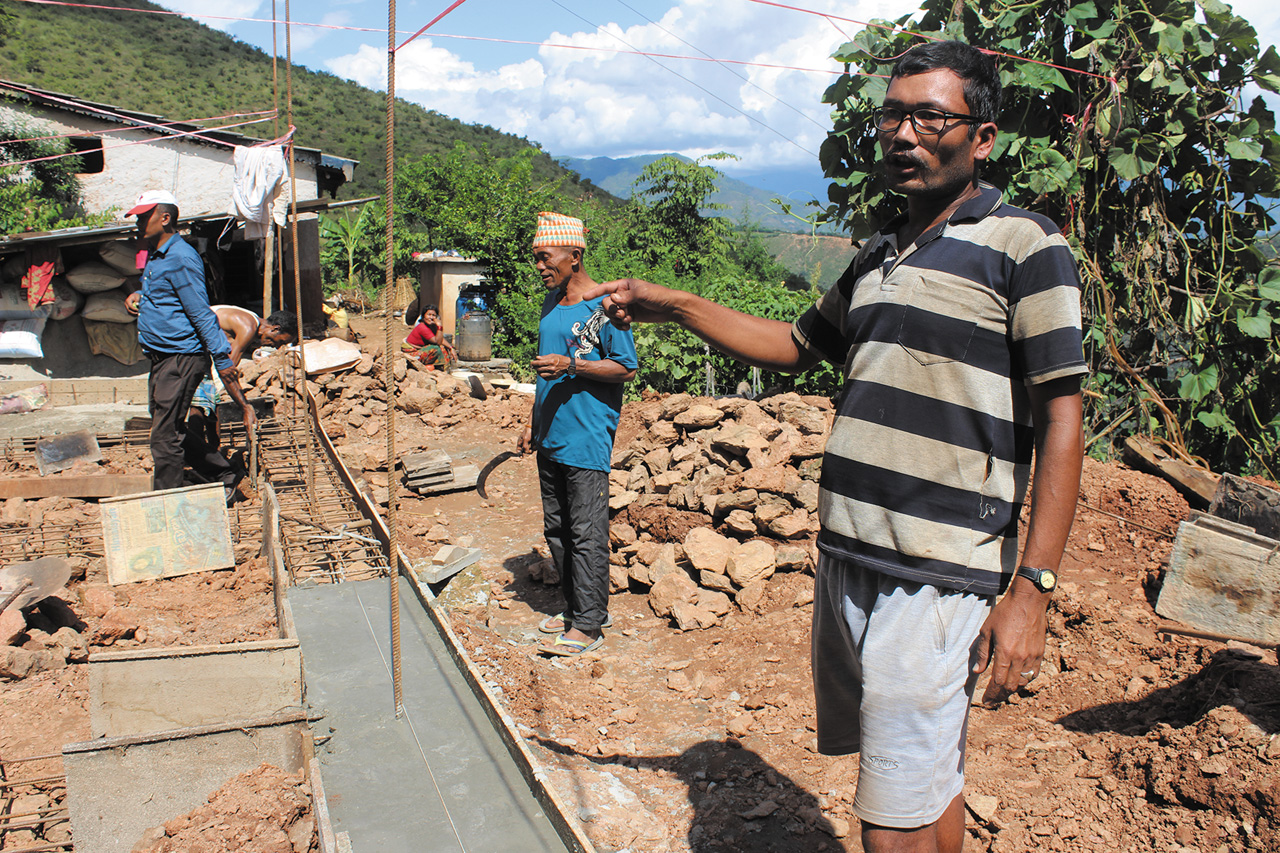The market survived
As the Nepal Red Cross Society and its Movement partners begin providing cash to help people rebuild their homes in a more earthquake-resistant manner, they will be looking carefully at local markets for material and labour to ensure the job can be done correctly. Fortunately, those markets, which have been a critical asset in the country’s recovery, continue to function adequately even if there have been shortages of some important materials.
“Unlike in many other countries [after a disaster], the markets in Nepal didn’t collapse,” says Umesh Dhakal, head of the Nepal Red Cross’s Earthquake Response Operation, noting, however, that after the quake there was an immediate shortage of commodities such as tents and tarpaulins.
“Even the rich with their big houses and their fleets of cars were in the streets at that time,” he says, “so there was no difference between rich people and poor people” as everyone scrambled to buy whatever supplies were available.
This is not to say the markets weren’t under stress. Natural disaster and political tensions combined to add to survivors’ woes as discontent over Nepal’s proposed new constitution triggered a blockade of the country’s vital border with India. Constricting the flow of goods and driving up the price of fuel and other vital goods, “the blockade had a massive impact on the markets”, says Max Santner, head of the IFRC’s Country Office.
In such situations, aid workers must also pay attention to what infusions of cash might do to local economies. Will they increase demand for certain goods and, therefore, drive prices higher? Santner feels the IFRC’s cash infusions — while very important to individual families — have not played a significant role in causing inflation when compared to other, much larger, market forces.
Post-distribution monitoring after the winter cash grants’ distribution showed that 95 per cent of respondents felt prices had indeed increased since the cash was given out. This is hardly surprising, however, given the price hikes in fuel caused by the blockade, on top of a history of steady inflation in recent years.
Further, a close examination of price trends in local markets revealed a more complex picture, according to IFRC delegate Jordane Hesse. “During the operation, [local Red Cross branches] tracked prices in the field for specific items like blankets and winter jackets, and also rice and sugar,” says Hesse. “There was a mix of trends depending on the location — some increases, some decreases and, in some cases, an increase followed by a decrease in prices.”
Such price tracking is an important part of understanding what effect cash transfers are having — or not having — on local economies. Another key aspect is understanding what cash grants mean for each individual household. According to Anita Ghimire, a Nepali researcher who studies social protection issues, cash grants free up resources for people to devote to longer-term livelihood needs.
After the earthquake, she says, “the first priority after basic food, clothes, medicines, etc., was investing in rebuilding infrastructure such as lost houses and sheds for cattle”. Without the cash grants, such as those given for home reconstruction, there might have been a “tendency to invest much less in strategic long-term livelihoods activities, so local markets would suffer more”.
 Red Cross Red Crescent magazine
Red Cross Red Crescent magazine 







 Tech & Innovation
Tech & Innovation Climate Change
Climate Change Volunteers
Volunteers Health
Health Migration
Migration